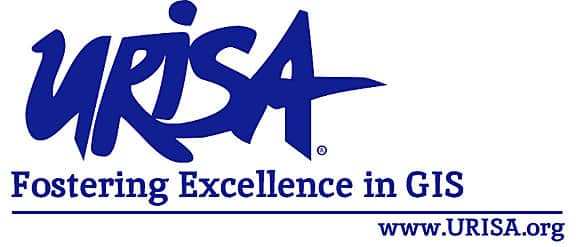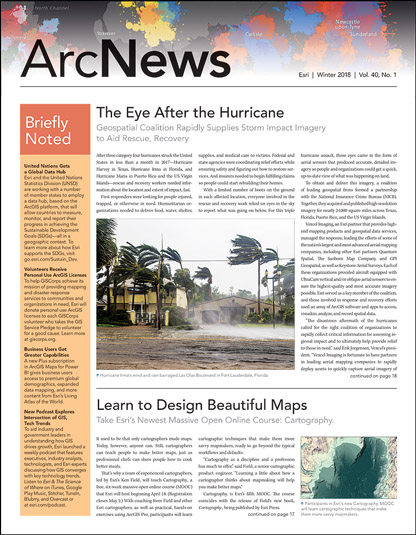When I started my career in GIS, there weren’t many people who considered themselves GIS professionals. In a way, it was the Wild West of GIS: most of us who roamed into this field had to make up our own rules and defend our projects one by one until we could stake a claim on what the technology was able to do.
There wasn’t much in the way of strategic or sustainability planning, and there were certainly no succession plans in place in case someone left. Most of the managers in those days were former planners or IT folks, with the occasional degreed geographer thrown in for sport.
I was the IT guy who got recruited when the old GIS manager walked out one day after lunch. I’m serious. I felt like the newcomer in town who gets handed the sheriff’s badge with the still-smoking bullet hole in it.
I’d like to say that I knew exactly what I was doing, that I had a plan going in and just executed it. But all too often, that’s not how GIS works.
What I can say is that I hit the ground running—and promptly fell flat on my face. One of my first solutions was to replace our 200-page paper tax map atlas with a PDF version that was easier to update and share. I made the maps as big as possible so employees could see what they were doing. While it was a pretty good idea, none of the maps were made to scale; I didn’t even know what the term meant.
Once I picked myself up and got back on the horse after that mistake, it took me well over a year to get things pointed in the right direction. I had to get data and files out of people’s hard drives and filing cabinets so we could develop a proper workflow management system. Along the way, we learned how to make the work the GIS division did accurate, accessible, and adaptable so that, ultimately, the department was accountable.
On this drive to move my team forward, I learned three golden rules for management that can help anyone get going more quickly in a GIS career than I did.
Solutions Save Time and Treasure—and Sell GIS

These days, everybody is being asked to do more with less. And those who have money to dish out don’t usually want to spend their limited budget on GIS.
To get colleagues on board with using GIS, it is important for you to expose—in easy-to-understand, measurable terms (preferably dollars)—what their returns on investment will likely be. Before even scheduling a meeting with your boss or another department, do some homework and have a GIS-based solution ready to go to solve one of their real-world problems. Look at the department’s website and find out what its vision is. Explore your boss’s social media pages to learn a bit more about his or her perspective. Ask around to find out what struggles their colleagues are facing. Your job as a GIS professional is to find a solution.
And here’s the gold nugget: during the meeting, actually show your colleagues how GIS can fix these problems. Have the solution in your hands—ideally on a smartphone or tablet—and demonstrate how GIS technology will save them time and treasure.
If You Can Lasso a Great Employee Once, You Can Do It Again

I had a boss whose number-one criteria for hiring people was, How long will they stay? Well, the answer was always, Way too long if we hired the wrong person for the job.
The very best people are in high demand. More often than not, innovative thinkers and problem solvers are lured away to greener pastures. So when it comes time for them to ride off into the sunset, let them go.
Don’t get me wrong, employee retention and treating staff well should both be high priorities. But it’s better to have a high performer for one year than an average performer for ten.
The golden rule is to attract the very best staff and take care of them for however long they’re with the organization. Capture their innovation, even if it’s only for a short time, and encourage their growth. It’s a no-lose situation because the organization gains these employees’ knowledge, skills, and enthusiasm while everyone learns from each other.
The very best situation, of course, is that the whole team works so well together that the best people want to stay for many years. That should always be the objective. But if your big guns do find themselves needing to wander, wish them well and get ready to lasso that next great employee.
Consultants Require Wrangling, but It Can Work

The GIS industry moves so fast that it’s difficult to keep up. Chances are, at some point, your GIS department will need to get some outside assistance—and this help usually comes in the form of consultants.
Like waddies—hired cowboys who wandered from ranch to ranch to help out during busy times—consultants can be saviors or the bane of an organization’s existence, sometimes even on the same day. The goal is clearly to make the consultant the former. And the way to strike gold is to be broad in scope, specific in requirements, and the inspector of what is expected.
When a consultant comes in, describe the desired outcome in general terms and let him or her propose some solutions. Then choose the best proposal and work with the consultant to define very specific deliverables that will be easy for both the GIS team and the consultant to adhere to. (Be careful to avoid the urge to expand the scope of the project after everyone has agreed on its parameters. That can easily derail a great working relationship.) During the project, inspect the consultant’s work to ensure that it meets your expectations. Finally, only pay the consultant once he or she has delivered the agreed-upon end results.
These experts have a vested interest in making organizations look good. Wrangle them early in the process, and that will be simple for both parties.
Taking On the Frontier, and (Maybe) Leaving It Behind
Adhering to these golden rules can not only jump-start your career in GIS management, but it can also make you one of those highly sought-after innovators and problem solvers. If you’re the one who ends up venturing off to mine new claims, make sure to leave your organization with a strategic plan for building and maintaining a sustainable GIS. This should include a well-trained successor to take your place so your organization is not left in the GIS hinterland.
About the Author
Jeff Griffin is the GIS manager for Macon-Bibb County Government in Georgia. When he’s not making strategic plans and solving problems at the local government level, he can be found hiking, kayaking, and attending home football games at Auburn University. For more information, email him at leadershipgis@gmail.com.


